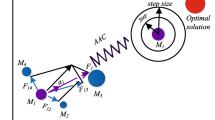Abstract
In the process of complex product assembly, assembly resources (fixtures, tools, operations, and so on) must enter assembly environment with parts together to rapidly finish product assembly. Assembly planning must take assembly resources into account fully. But, designer cannot plan every assembly procedure because of the lack of assembly resources during assembly design. Then, it will cause assembly failures and redesign for assembly easily. This paper investigates an efficient method of assembly sequence planning based on genetic algorithm and ants algorithm (GAAA) and optimizing by assembly path feedback to assembly process planning including assembly resources for complex products. Firstly, a new GAAA is investigated to rapidly plan assembly sequence in order to solve the nondeterministic polynomial-bounded problem in high searching and solving efficiency. Secondly, on the basis of the assembly sequence, a B-Rep filling algorithm which can form a swept volume between the part and its kinetic orientation is developed to plan assembly path interactively. Thirdly, the performance of the assembly path according to the assembly sequence is analyzed and sent back to avoid the most of assembly collisions and interventions during product assembly design. Lastly, we develop a simulating system to simulate assembly sequence and path based on component application architecture for CATIA V5. The simulating result proved that the proposed method of assembly sequence planning based on GAAA and optimizing by assembly path feedback for complex products is efficient. Assembly optimal design including assembly resources can work well.
Similar content being viewed by others
References
Zha XF, Du HJ, Qiu JH (2001) Knowledge-based approach and system for assembly oriented design Part I: the approach. Eng Appl Artif Intell 14(1):61–75 doi:10.1016/S0952-1976(00)00060-9
Zha XF, Du HJ, Qiu JH (2001) Knowledge-based approach and system for assembly oriented design part II: the system implementation. Eng Appl Artif Intell 14(2):239–254 doi:10.1016/S0952-1976(00)00061-0
Holland JH (1975) Adaptation in natural and artificial system. MIT, Cambridge, MA
Lazzerini B, Marcelloni F (2000) A genetic algorithm for generating optimal assembly plans. Artif Intell Eng 14(4):319–329 doi:10.1016/S0954-1810(00)00011-X
Marian RM, Luong LHS, Abhary K (2006) A genetic algorithm for the optimisation of assembly sequences. Comput Ind Eng 50(4):503–527 doi:10.1016/j.cie.2005.07.007
Li JR, Khoo LP, Tor SB (2003) A Tabu-enhanced genetic algorithm approach for assembly process planning. J Intell Manuf 14(2):197–208 doi:10.1023/A:1022903514179
Chen R-S, Lu K-Y, Yu S-C (2002) A hybrid genetic algorithm approach on multi-objective of assembly planning problem. Eng Appl Artif Intell 15(5):447–457 doi:10.1016/S0952-1976(02)00073-8
Dong T, Tong R, Zhang L, Dong J (2005) A collaborative approach to assembly sequence planning. Adv Eng Inform 19(2):155–168 doi:10.1016/j.aei.2005.05.008
Dong T, Tong R, Zhang L, Dong J (2007) A knowledge-based approach to assembly sequence planning. Int J Adv Manuf Technol 32(11–12):1232–1244 doi:10.1007/s00170-006-0438-1
Niu X, Ding H, Xiong Y (2003) A hierarchical approach to generating precedence graphs for assembly planning. Int J Mach Tools Manuf 43(14):1473–1486 doi:10.1016/S0890-6955(03)00168-8
Yin Z, Ding H, Li H, Xiong Y (2003) A connector-based hierarchical approach to assembly sequence planning for mechanical assemblies. Computer-Aided Des 35(1):37–56 doi:10.1016/S0010-4485(01)00174-9
Lai H-Y, Huang C-T (2004) A systematic approach for automatic assembly sequence plan generation. Int J Adv Manuf Technol 24(9–10):752–763 doi:10.1007/s00170-003-1760-5
Chen W-C, Tai P-H, Deng W-J, Hsieh L-F (2008) A three-stage integrated approach for assembly sequence planning using neural networks. Expert Syst Appl 34(3):1777–1786 doi:10.1016/j.eswa.2007.01.034
Cao P-B, Xiao R-B (2007) Assembly planning using a novel immune approach. Int J Adv Manuf Technol 31(7–8):770–782 doi:10.1007/s00170-005-0235-2
Oliver JH, Huang HT (1994) Automated path planning for integrated assembly design. Computer-Aided Des 26(9):658–666 doi:10.1016/0010-4485(94)90017-5
Murayama T, Fuminori Oba (1997) Disassembly/assembly path search reusing solutions. In; IEEE Symposium on Emerging Technologies and Factory Automation, ETFA, Los Angeles, CA, pp 183–188
Shih FY, Wu YT (2004) Three-dimensional Euclidean distance transformation and its application to shortest path planning. Pattern Recogn 37(1):79–92 doi:10.1016/j.patcog.2003.08.003
Young K-Y, Huang C-Y (1997) Collision-free path planning and modification based on task requirements. Mechanism Mach Theory 32(1):21–37 doi:10.1016/0094-114X(96)00042-0
Wu K-H, Chen C-H, Ko J-M (1999) Path planning and prototype design of an AGV. Math Comput Model 30(7–8):147–167 doi:10.1016/S0895-7177(99)00171-5
Autere A (2002) Hierarchical A* based path planning—a case study. Knowl Base Syst 15(1–2):53–66 doi:10.1016/S0950-7051(01)00121-6
Lee Z-J, Su S-F, Chuang C-C, Liu K-H (2008) Genetic algorithm with ant colony optimization (GA-ACO) for multiple sequence alignment. Appl Soft Comput 8(1):55–78 doi:10.1016/j.asoc.2006.10.012
Author information
Authors and Affiliations
Corresponding author
Additional information
An erratum to this article can be found at http://dx.doi.org/10.1007/s00170-008-1777-x
Rights and permissions
About this article
Cite this article
Hui, C., Yuan, L. & Kai-fu, Z. Efficient method of assembly sequence planning based on GAAA and optimizing by assembly path feedback for complex product. Int J Adv Manuf Technol 42, 1187–1204 (2009). https://doi.org/10.1007/s00170-008-1661-8
Received:
Accepted:
Published:
Issue Date:
DOI: https://doi.org/10.1007/s00170-008-1661-8




